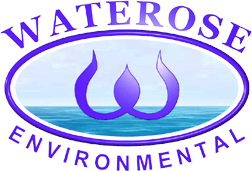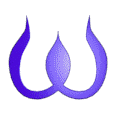 | ||||||
| Articles | Projects | Resume | Cartoons | Windsurfing | Paintings | Album |
Sooke River Research and Development Automated Water Quality Monitoring Station
Judith R. Burke

Waterose Environmental Services
Vancouver Island, BC
for the Province of BC


Testing the Waters
Story and Foto by Brian Drielich, Sooke News Mirror, March 28, 2001
Although warming temperatures foretold it was finally spring last week, only a couple of people were brave enough to ask “how's the water?” on the Sooke River.And those two people were found at the HQ Automated water quality monitoring station by the Sooke Potholes provincial park, using breakthrough technology that will examine Sooke water like it has never been tested before.
The Sooke River is the sample source for this new high level station that provides continuous water quality test results for effective watershed management, 24 hours a day.
“It's not just a grab-sample one time test. It's autonomous, and records data every 15 minutes,” environmental scientist Judith Burke said.
Although fecal coliform levels are not tested at the station, it does monitor water level, water temperature, pH, dissolved oxygen, turbidity (solids in the water), and specific conductance, which refers to the dissolved ions in the water column.
Burke said much of this data is important to monitor for the fish habitat.
Veins of Life Watershed Society water stewardship advisor Bob Truelson said the station has the ability to monitor the effects of events such as storms.
“We were able to measure when the river rose up three metres in six hours. It's phenomenal, and a very reactive stream,” he said.
The station can even be programmed to automatically call the office during an unusual event.
The test project began in the early fall and is scheduled to end in March, although Truelson said he anticipates the study to continue longer. It was funded under an $8,000 contract with the Ministry of Environment, Lands and Parks.
A site location wasn't particularly easy to find at first for this project, as the quality of the collected data must meet Ministry protocols.
“It needed to be in a creek with adequate depth that has 12 months of good flow,” Truelson said.
The water testing is beneficial to several parties other than fish. Burke said it's important for recreation uses, land development, timber harvesting, and an interest to the T'Sou-ke First Nation.
Burke and Truelson visit the site every second week, in order to keep it a “class A” station, said Burke, which is the highest level for station quality.
During their visits, the two water experts take grab samples in order to make sure the manual data is equivalent to the sensor readings.
They also change batteries and clean the equipment as needed.
The equipment, including a data logger and electrochemical sensors, totals around $13,000, said Burke.
“If the equipment lasts 15 years, it's less than one penny per data point,” she said.
For more information about Automated Water Quality Monitoring Stations, contact:
 Email Judith Burke at Waterose Environmental Services
Email Judith Burke at Waterose Environmental Services

Other Water Quality Projects by Waterose:
 Scientific Presenter at the Canadian Advanced Water Quality Monitoring Course presented to Egyptian Delegation, October 2002
Scientific Presenter at the Canadian Advanced Water Quality Monitoring Course presented to Egyptian Delegation, October 2002
 Scientific Presenter at the Canadian Advanced Water Quality Monitoring Course presented to Egyptian Delegation, October 2002
Scientific Presenter at the Canadian Advanced Water Quality Monitoring Course presented to Egyptian Delegation, October 2002Automated Water Quality Monitoring Station
Twelve Month Baseline Water Quality Study for Salmonids in the lower Sooke River Watershed Final Report by Waterose
Twelve Month Baseline Water Quality Study for Salmonids in the lower Sooke River Watershed by Brian Drielich in Sooke News Mirror
Twelve Month Baseline Water Quality Study for Salmonids in the lower Sooke River Watershed by GEM Mortimore in Times Colonist
Water Quality Project on Musqueam Salmon Stream in Urban Vancouver
Analysis of Coliforms and Nutrients in surface waters flowing into Esquimalt Lagoon
Water Quality Monitoring on Ayum Creek, a wild salmon and trout bearing stream, for Society for the Protection of Ayum Creek and Fisheries and Oceans, Canada

 email Waterose for more information
email Waterose for more informationPlease Sign My Guestbook
Please View My Guestbook

| Articles | Projects | Resume | Cartoons | Windsurfing | Paintings | Album |
 | ||||||